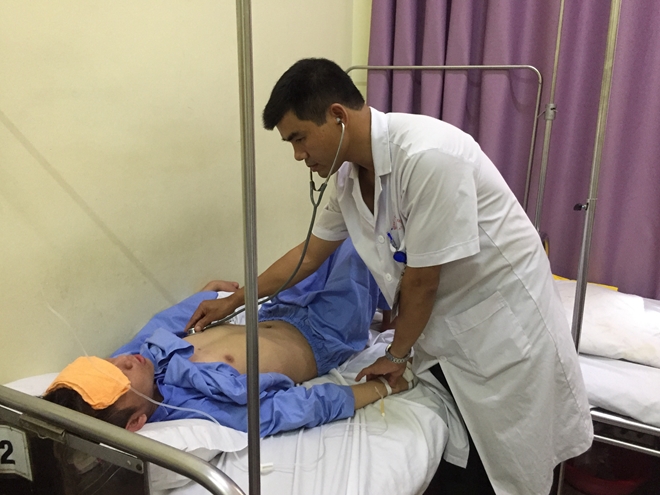Public security hospitals striving to control dengue epidemic
- Hanoi implements large-scale environmental sanitation to prevent dengue fever
- Public security forces strengthen prevention and control of dengue fever
- Hospitals in Hanoi overcrowded with dengue patients
The number of dengue patients came to the Department of Infection of Hospital 198 for examination and treatment have increased sharply since June with approximately more than 100 cases per day. The hospital is currently treating about 200 dengue patients. In general, these patients are recovering, and there is no serious case.
According to leaders of Hospital 198, dengue patients at the hospital are mainly residing in the neighborhoods, and only about 30% of the patients are public security officers and soldiers from public security units stationing in Hanoi.
 |
Against the complex situation of dengue, Hospital 198 has established a Board of Disease Prevention and Control to promote dengue epidemic prevention activities in the hospital. The hospital also mobilized its Youth Union members to clear up all bushes and spray mosquito insecticide around the hospital.
Meanwhile, the Traditional Medicine Hospital under the Ministry of Public Security is facing the same situation. As of August 15th, 1,527 dengue patients were examined and treated at the hospital, and nearly 400 cases were under inpatient treatment.
According to Major General Pham Ba Tuyen, Director of the Traditional Medicine Hospital, the hospital had made a standard therapy plan with a combination between traditional and modern medicine to treat the disease in line with the Health Ministry’s directions.
Senior Colonel Nguyen Van Loc, Deputy Director of the Heath Department of the Ministry of Public Security said, along with the two major hospitals of the Ministry of Public Security, the agency had instructed the entire public security health network to carry out professional activities to prevent the dengue epidemic. The department also formed a working team to review the treatment process at Hospital 198 and the Traditional Medicine Hospital, so leaders of the department could learn about the hospitals’ difficulties and propose suitable measures to respond to possible growth of the disease.

